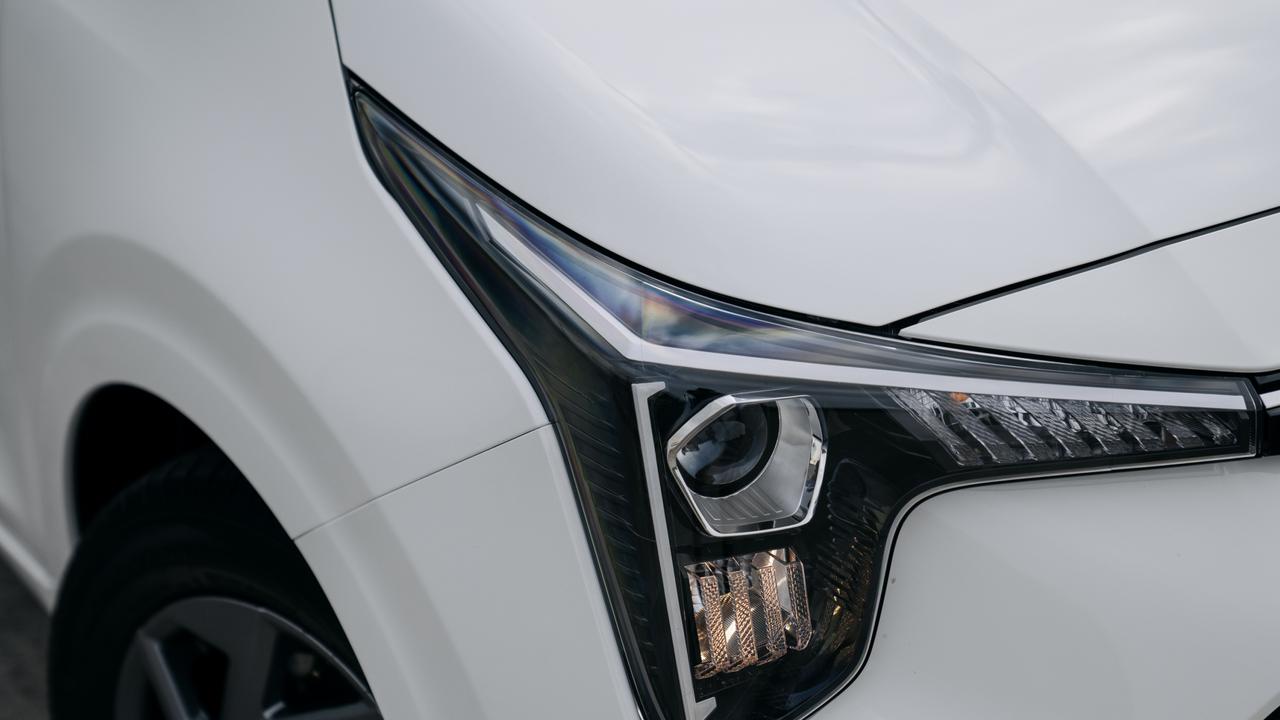Just days after being fitted with one of Elon Musk’s hi-tech brain implants, a test monkey began pushing her head against the concrete floor, tearing at her hair, and laying at the foot of her cage so she could hold hands with another primate on the other side of the bars.
The macaque, described in research notes as ‘Animal 15’, grew terrified of laboratory workers at the facility run by the University of California, shaking uncontrollably when seeing them approach.
Over the coming months, the juvenile female became increasingly uncomfortable, pulling at the implant and picking at the surgical sight until it bled.
Finally, after a significant physical and mental deterioration, Animal 15 was euthanised and an autopsy later revealed part of her brain had been essentially shredded.
Four years on, Neuralink – the company Musk founded to develop a brain implant for mass public application – has just conducted its first surgery on a human test subject.
The billionaire claims the device, branded Telepathy, will soon do everything from controlling electronics to curing autism, Alzheimer’s and blindness, and providing X-ray vision.
Hundreds of animals killed
The horrific fate of Animal 15 was one of dozens of cases uncovered by the not-for-profit group Physicians Committee for Responsible Medicine (PCRM), which obtained a trove of documents after suing the university.
Among the litany of complications noted in the monkey subjects were bloody diarrhoea, partial paralysis, brain swelling and psychological trauma, research notes reveal.
For example, a macaque dubbed ‘Animal 20’ experienced complications within a day, when it began scratching at the surgical site and pulling on a connector cable, causing an internal component to break off.
An emergency surgery to repair the issue revealed that an infection had already broken out and technicians deemed it unlikely that treatment would be a success. The animal was destroyed.
Shockingly, another monkey appeared to engage in “self-mutilation” after receiving an implant, by tearing or biting off its fingers and toes, PCRM revealed.
At least a dozen monkeys died during animal trials, the group said, but a total of 1500 animals – including 280 sheep and pigs – perished.
Late last year when news of the animal testing broke, Musk released a statement claiming all of the monkeys used had terminal illnesses, meaning they would die anyway.
“No monkey has died as a result of a Neuralink implant,” he added.
A former Neuralink employee, interviewed on the condition of anonymity for a WIRED investigation, described Musk’s claim as “ridiculous”.
“We had these monkeys for a year or so before any surgery was performed,” the whistleblower told the publication.
Another source said: “These are pretty young monkeys. It’s hard to imagine these monkeys, who were not adults, were terminal for some reason.”
In a complaint to the Securities and Exchange Commission, the PCRM also alleged: “Musk knows that [claim] to be false.”
“Public records obtained reveal that at least 12 young, previously healthy monkeys were euthanized by Neuralink as a direct result of problems with the company’s implant.
“The animals’ deaths and the reasons for their deaths relate directly to the safety and marketability of the brain-computer interface Neuralink is developing.”
Big claims, bigger concerns
In 2017, a bombshell Wall Street Journal article revealed Musk had founded a revolutionary new tech company called Neuralink a year earlier without anyone noticing.
“Building a mass-market electric vehicle and colonising Mars aren’t ambitious enough for Elon Musk,” the newspaper declared. “The billionaire entrepreneur now wants to merge computers with human brains to help people keep up with machines.”
It would be another two years until Neuralink made its first public announcements in a livestreamed presentation featuring an early prototype, a futuristic robotic ‘surgeon’, and plenty of grand statements.
At that point, Musk said scientists had developed an implant roughly the size of a 10C piece featuring ‘neural lace’, or tiny flexible threads embedded with electrodes, intended to be inserted into the brain.
Through stimulation of neural activity, recorded in high-resolution and transmitted wirelessly to external devices for analysis, simple thoughts could perform a host of functions.
Neuralink’s own communications about what the device could do were exciting but modest, describing users with paralysis being able to control a keyboard or cursor with their minds.
But when talking up about the company’s research, Musk has been much less measured.
Over the past few years, he has made countless bold claims about the “near future” applications of Neuralink, from essentially curing major health issues to allowing users to ‘speak’ telepathically.
Among his initial priorities is fast-tracking developments that will restore eyesight, even to people born blind, and giving back “full body functionality” to those paraplegics and quadriplegics.
“We’re confident there are no physical limitations to enabling full body functionality,” he has said.
In an interview with tech researcher Lex Fridmann on his podcast Artificial Intelligence, Musk said the device could “solve a lot of brain-related diseases” like Alzheimer’s, autism and schizophrenia.
Eventually, he wants Neuralink to cure fears and phobias, stream music inside the mind, and potentially capture and transport human consciousness.
“The future is going to be weird,” Musk said in one demonstration.
“In the future, you will be able to save and replay memories. You could basically store your memories as a backup and restore the memories. You could potentially download them into a new body or into a robot body.”
In another ‘show and tell’ of the technology, he hinted at the idea of “conceptual telepathy” that would allow users to communicate using just their thoughts.
When asked on X, formerly Twitter, if Neuralink could ‘rewire’ the brain to treat mental health issues like addiction and depression, he replied: “For sure.”
And he’s predicted users having the ability to see in X-ray, infra-red and ultraviolet, adding: “Over time, we could give somebody super vision.”
Art Caplan is head of the Division of Medical Ethics at New York University’s Grossman School of Medicine and slammed some of Musk’s most fanciful claims.
“This isn’t quite the same as trying to compete in the car business,” Professor Caplan told medical news outlet Healthline about neurological research.
“You have to be really careful about over-promising or over-hyping when you’re dealing with groups like people with spinal cord injury, blindness or neurological damage or disease.
“In this case, you have individuals who are really hoping for a breakthrough. So. finding out that what Musk is talking about is years away could be crushing to them.”
He urged people excited about Musk’s lofty claims to take them with a grain, “if not four or five grains of salt”.
Not as novel as it seems
At the start of 2021, Neuralink hosted yet another tech demonstration with a special guest – Pager, a male macaque monkey, playing a version of the video game Pong.
In the video, Pager could be seen using a joystick to move a cursor around on a screen – but the controller wasn’t plugged in or connected to anything.
Instead, the on-screen movements were a result of the animal merely thinking about what his hand was doing.
Musk championed the result as revolutionary.
“We’ve already got a monkey with a wireless implant in their skull … that can play video games using his mind,” he said.
Experts in the field of neuroscience weren’t quite as excited.
“Brain control of computer cursors by monkeys is not new,” Andrew Jackson, a professor from the University of Newcastle in the UK, told Business Insider.
In fact, the first demonstration of comparable technology was conducted 20 years ago, while the theory behind the technology dates back to the 1960s.
The researcher Eberhard Fetz connected a needle to a single neuron in a monkey’s brain and trained it to move the thin piece of metal using just its brain activity, back in 1969.
Andrew Hires, a neurobiology professor at the University of California, also downplayed the significance Pager “moving a cursor to move a little ball to match a target”,
“The monkey is not surfing the internet,” he told Business Insider.
Neuralink isn’t even the first to implant that kind of device in a human test subject, with the New York-based Synchron beating Musk by a long shot.
It also appears to have demonstrated user safety. And recipients with paralysis have successfully used the implant to surf the internet and shop online.
Neuralink’s first application with the Food and Drug Administration to commence human trials was denied, with the agency expressing concerns about the device’s lithium battery and potential for its “tiny wires to migrate to other areas of the brain”.
Last May, a revised submission was approved and the company was permitted to commence surgeries on human subjects.
“This is the result of incredible work by the Neuralink team in close collaboration with the FDA and represents an important first step that will one day allow our technology to help many people,” Neuralink said in a statement at the time.
Musk took to X to celebrate the news, writing: “Congratulations team!”
Yesterday, some eight months later, he again took to social media to confirm the first human recipient of an implant was “recovering well”.
“Initial results show promising neuron spike detection,” Musk added.





